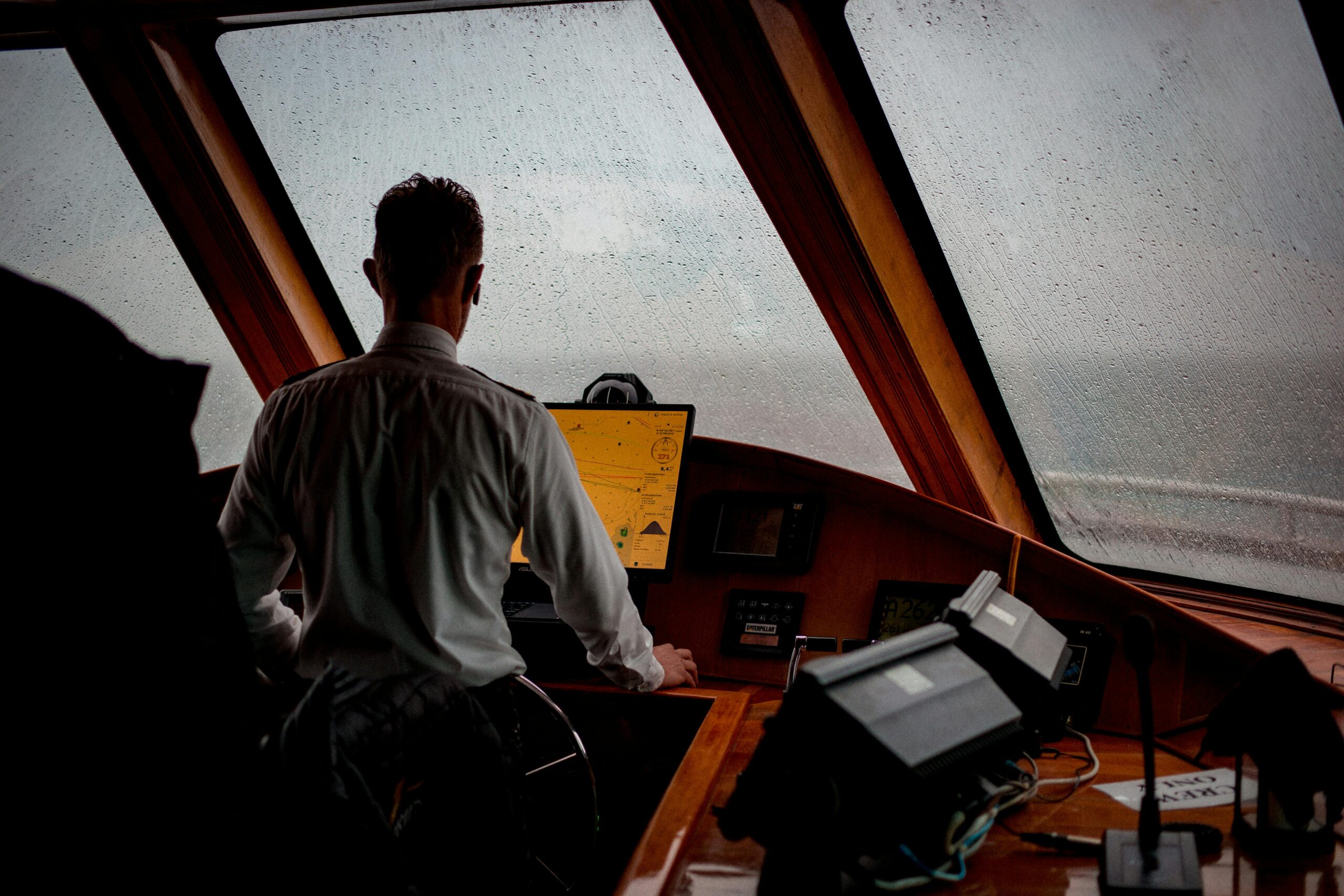Are you curious about how the weather radar Perth systems work to keep you informed and prepared? In a city known for its unpredictable climate, having access to accurate and real-time weather updates is more important than ever. Did you know that modern Perth weather radar technology can detect storms and rainfall patterns from hundreds of kilometres away, providing crucial data for both residents and businesses? Imagine being able to plan your day with confidence, knowing exactly when a sudden downpour or heatwave might strike. This is where advanced weather radar systems in Perth come into play, combining cutting-edge technology with meteorological expertise. But how reliable are these radars during extreme weather events, and what innovations are shaping the future of weather forecasting in Western Australia? Whether you’re a weather enthusiast or simply want to stay one step ahead of the elements, exploring the latest updates on Perth weather radar coverage can reveal surprising insights. Stay tuned as we dive deeper into the fascinating world of weather radar and uncover how it impacts your daily life in Perth. Don’t miss out on learning how real-time weather radar Perth updates can transform your understanding of local weather patterns!
How Does Weather Radar Perth Accurately Predict Storms?
If you ever been caught in a sudden downpour in Perth, you know how unpredictable the weather can be here. That’s where the weather radar Perth comes into play, although, not all of us really understand how it works or why it matters so much. Basically, weather radar is like a big eye in the sky that watch the clouds, rain, and storms coming our way. But sometimes, it feels like the radar is just guessing, especially when the forecast says one thing and you get drenched five minutes later. Go figure.
So, what exactly is this weather radar Perth thing? Well, it’s a type of technology that sends out radio waves which bounce off rain droplets in the atmosphere. When the waves come back, the radar uses the information to create an image of where the rain is and how heavy it might be. Sounds simple, right? But there’s more to it – like Doppler radar, which can even tell if the rain or hail is moving towards or away from the radar station. Pretty fancy stuff.
Types of Weather Radar Used in Perth
Here’s a quick rundown of the kinds of radar systems that are typically used around Perth:
| Radar Type | Description | Usage in Perth |
|---|---|---|
| Conventional Radar | Sends out pulses and listens for echoes | Basic rain detection |
| Doppler Radar | Measures velocity of rain droplets | Detects storm movement and severity |
| Dual-Polarisation Radar | Sends pulses in both horizontal and vertical planes | Differentiates rain, hail, and snow |
Not really sure why this matters, but dual-polarisation radar is supposed to be a game-changer because it can tell the difference between rain and hail, which is kinda handy during those wild Perth storms.
Why do we care about weather radar Perth?
You might be thinking, “Why should I care about some radar?” Well, for starters, it helps meteorologists predict the weather with better accuracy. When you check your phone for the weather update, that info came from radar data at some point. Without it, you’d probably be guessing if you should carry an umbrella or not. But, and this is a big but, sometimes the radar shows rain that never actually falls on your street. Weird, right? Maybe it’s just me, but I feel like the radar has a mind of its own.
Here’s a small list of benefits the radar provides:
- Real-time tracking of storms and rainfall
- Early warnings for severe weather like thunderstorms or hail
- Helps farmers plan their irrigation
- Aids in flood forecasting and disaster management
But of course, none of these are perfect, because, you know, it’s weather we are talking about.
A Typical Weather Radar Image Explained
If you ever looked at a weather radar Perth image, it can look like a bunch of colourful blobs and swirls. Here’s a simple breakdown of what those colours usually mean:
| Colour | Meaning |
|---|---|
| Green | Light rain |
| Yellow | Moderate rain |
| Orange | Heavy rain |
| Red | Very heavy rain or hail |
| Purple | Extremely severe weather |
Sometimes the images have weird artefacts or spots, which are just noise or birds flying around. Yeah, the radar sometimes picks up a flock of birds and thinks it’s a mini rainstorm. Imagine that!
Practical Insights on Using Weather Radar in Perth
If you live in Perth and want to make the most out of the weather radar Perth tools, here are some tips, which I swear actually help:
- Check multiple sources – Don’t rely on just one radar site or app; cross-reference for better accuracy.
- Look for movement – The radar updates every few minutes, so watch how the rain clouds move to predict if the rain will hit you soon.
- Learn the colours – Knowing what the colours mean can save you from getting soaked or worse.
- Use it for planning outdoor activities – Whether you’re going for a BBQ or surfing, checking radar beforehand can save your day.
Some Fun (or Frustrating) Facts
- Perth’s weather radar sometimes struggles with sea clutter, which is when the radar picks up waves and mist over the ocean and mistakes it for rain.
- Radar can’t see through mountains or big buildings, so the coverage isn’t always perfect.
- Sometimes, radar data can be delayed by a few minutes, which in fast-changing weather, might feel like an eternity.
Maybe it’s just me, but I find it hilarious that our fancy tech sometimes gets fooled by gulls or big waves. Nature always has the last laugh.
Where to Find Reliable Weather Radar Perth
If you want to check out the weather radar Perth for yourself
Top 7 Features of Perth’s Advanced Weather Radar Technology
When it comes to weather radar Perth, folks often think it just tells us if it might rain or not. But honestly, it’s way more complicated than that. You see, weather radars are these fancy gadgets that send out radio waves, and then they listen to the echoes bouncing back from raindrops, hail, or even dust storms. Sounds like sci-fi, right? But it’s real life here in Perth, and these radars help a lot with forecasting.
Now, the main radar station near Perth is operated by the Bureau of Meteorology. They got this huge dish spinning around, scanning the skies every few minutes. The data collected is then processed to produce those colourful maps you see online or on TV. Not really sure why this matters, but the colours actually mean something. Green means light rain, yellow is moderate, and red? Well, you better grab your umbrella, because heavy rain or storms is coming your way.
Let me break down how the Perth weather radar system works in a simple table, so it’s easier to understand:
| Component | Function | Notes |
|---|---|---|
| Radar Dish | Sends and receives radio waves | Spins 360 degrees every 10 minutes |
| Signal Processor | Converts echoes into digital data | Filters out noise like birds or planes |
| Display Software | Creates visual maps of precipitation | Shows intensity, movement, and type |
| Communication Link | Sends data to forecast centres | Usually via high-speed internet |
One interesting thing about the weather radar Perth system is that it doesn’t just detect rain. It can also estimate wind speeds inside storms by looking at Doppler shifts. Fancy word, Doppler, which basically means how much the waves changes frequency because of moving stuff. So it’s not just about watching the sky; it’s about knowing what’s going on inside those clouds too.
Sometimes, people get confused and think radar can predict exactly when and where rain will fall. That’s not really true. It’s more like a snapshot of what’s happening now. The forecast part comes from combining radar data with other weather models and historical info. So if you see a bright red patch on the radar, it mean heavy rain right there, but that doesn’t guarantee your street will be soaked five minutes later.
Here’s a quick list of why weather radar Perth is super useful for locals:
- Helps farmers decide when to plant or harvest.
- Assists emergency services to prepare for floods or storms.
- Guides airlines on safe flying routes.
- Keeps everyday people informed so they don’t get caught in the rain.
But, maybe it’s just me, but I feel like sometimes the radar info can be a bit overwhelming. You got all these colours, blips and moving blobs on the screen and you wonder: “What does all this mean for my picnic this weekend?” If you like me, you probably just want a simple yes/no answer like “Will it rain or not?”
To make it easier for everyone, there are lots of websites and apps that use the raw data from the Perth radar and turn them into easy-to-understand forecasts. Some even let you watch the radar in real-time, which is kinda cool if you’re into that sort of weather geek stuff.
Below is a simple checklist for using Perth weather radar effectively:
- Check the radar regularly if you have outdoor plans.
- Look for the movement of rain patterns, not just their current position.
- Remember that radar can’t see through very thick clouds sometimes.
- Use radar info along with official weather warnings from BOM (Bureau of Meteorology).
One thing that gets me scratching my head is the occasional radar blackout. Yep, sometimes the radar station has maintenance or technical issues, and then there’s no data for hours. It’s like the sky is playing tricks on us and we’re left guessing. Not funny when you’re trying to plan a barbecue!
Here’s a quick glance at some common issues with Perth weather radar system:
| Issue | Cause | Impact |
|---|---|---|
| Radar Maintenance | Scheduled downtime | No data during maintenance |
| Signal Interference | Aircraft, birds, or electronic noise | False echoes or missing data |
| Weather Conditions | Heavy hail or strong winds | Reduced accuracy or radar clutter |
| Technical Faults | Equipment failure | Complete data loss |
Despite these hiccups, the technology behind weather radar Perth has improved heaps over the years. Early radars were bulky and less accurate, but now we got sophisticated Doppler radars, dual-polarisation tech, and even mobile radar units for special events or emergencies.
If you ever wondered what all those radar terms mean, here’s a cheat sheet for the most common ones you might see on a radar
Discover the Science Behind Perth’s Precise Storm Forecasting
When you thinks about the weather radar Perth scene, it’s honestly a bit of a mixed bag. I mean, sure, we all want to know if it’s gonna chuck it down or be sunny, but the tech behind it? That’s where things get kinda interesting — or confusing, depends how you look at it. So, grab a cuppa and let’s dive into this radar business, shall we?
First up, what exactly is a weather radar? In the simplest terms, it’s a machine that sends out radio waves and listens for echoes. When these waves hits raindrops or hail, they bounce back and the radar uses this to figure out where the rain is falling, how heavy it is, and sometimes even the direction it’s moving. Now, in Perth, where the climate can be a bit all over the shop — hot summers, wet winters — having a reliable weather radar Perth is kinda crucial for farmers, commuters, and anyone who just hates being caught in the rain without an umbrella.
Here’s a quick rundown in table form to help you get the gist of the main radar types used in Perth and their functions:
| Radar Type | Function | Accuracy Level | Common Use |
|---|---|---|---|
| Doppler Radar | Measures wind and rain movement | High | Severe weather tracking |
| Dual-Polarisation | Differentiates rain, hail, snow | Medium-High | Improving precipitation estimates |
| Conventional Radar | Basic rain detection | Medium | General weather forecasts |
Not really sure why this matters, but the Doppler radar is the one that usually gets all the spotlight because it can tell if a storm is spinning — handy when you wanna know if a tornado’s on its way or not. Perth doesn’t get many tornadoes (thankfully!), but still, the tech is used for spotting squally showers and thunderstorms.
Now, you might be wondering, “How often does this radar update here in Perth?” Well, it depends on the system, but generally, most weather radar in Perth refreshes every 6 to 10 minutes. Yeah, that’s not exactly real-time, but it’s close enough for us mere mortals trying to decide if we should bother taking the washing out or not.
Below is a quick list of what you can typically expect from the weather radar Perth updates:
- Rain intensity shown in different colours (green for light rain, red for heavy)
- Movement arrows that show wind direction
- Estimated rainfall amounts over the last hour
- Alerts for potential severe weather (like thunderstorms)
You’d think this stuff would be foolproof, but nope, there’s always a catch. Radar beams can get blocked or distorted by hills, buildings, or even just heavy rain itself. So sometimes, you’re looking at a radar image and thinking “That cloud looks like it’s gonna dump buckets,” but the radar says “Nah, just a drizzle.” It’s a bit like putting your faith in a weather app that sometimes tells you it’s sunny when you’re drenched through.
Speaking of apps, don’t even get me started on the variety of online platforms that use weather radar Perth data. Some are brilliant, others… well, let’s just say you might as well toss a coin. Here’s a quick comparison of popular Perth weather radar sources:
| Platform | User Interface | Update Speed | Additional Features |
|---|---|---|---|
| Bureau of Meteorology | Clean, official | 6 minutes | Severe weather warnings, forecasts |
| Weatherzone | Colourful, busy | 10 minutes | Rainfall forecasts, storm tracking |
| Windy | Interactive | 5-7 minutes | Wind maps, 3D radar views |
Maybe it’s just me, but I feel like sometimes these apps try too hard to look fancy and end up confusing the heck out of you. Like, I just want to know if I need a brolly, not see a 3D spinning globe with rain clouds that look like a sci-fi movie.
Okay, let’s talk practical tips for using weather radar Perth like a pro (or at least pretend to be one):
- Check radar updates regularly during bad weather days — storms can pop up fast.
- Use multiple sources to cross-check info — if two radars say rain, probably rain.
- Look out for those colour codes — red and purple usually mean “stay indoors.”
- Remember radar can’t see through everything — trust your own eyes and weather feels too.
- For farmers and outdoor workers, combine radar data with local weather observations for best results.
Just for a bit of fun, here’s a quick cheat sheet for interpreting common radar colours you’ll see on weather radar Perth:
| Colour | What
Why Weather Radar Perth Is Essential for Severe Weather Warnings
Ah, the good ol’ weather radar Perth – if you ever wonder what’s happening up there in the sky, well, this gadget is supposed to be your best mate. But honestly, sometimes it feels like it’s just guessing half the time. I mean, how accurate can it be when the weather changes faster than you can say “umbrella”? Anyway, let’s dive into this world of rain maps and storm trackers – or try to, at least.
Why Is Weather Radar So Important In Perth?
Perth’s weather isn’t exactly what you’d call predictable. One moment it’s sunny, the next you’re drenched like a drowned rat. So, the weather radar Perth systems are meant to help locals plan their day, avoid getting caught in the rain, or prepare for more serious stuff like thunderstorms. Not really sure why this matters, but apparently, farmers and pilots swear by it. Here’s a quick list of who uses the radar the most:
- Farmers keeping tabs on rainfall
- Pilots checking for storms
- Local councils planning events
- Outdoor sports enthusiasts avoiding showers
If you don’t use the radar, you might end up soggy, and no one wants that, right?
How Does The Weather Radar Actually Work?
Without getting too nerdy, the radar sends out radio waves that bounce off raindrops, hail, or whatever precipitation is in the air. Then it listens for the echo to figure out where and how much rain is falling. Sounds simple, but in reality, it’s a bit of a mess. Sometimes the radar picks up birds or insects, which throws off the readings. Maybe it’s just me, but I feel like the radar’s got mood swings or something.
Here’s an overly simplified table that kinda shows what’s going on:
| Radar Signal | What It Means | Possible Issues |
|---|---|---|
| Strong echo | Heavy rain or hail | Can confuse birds for rain |
| Weak echo | Light rain or drizzle | Might miss very light rain |
| No echo | No precipitation | Sometimes radar can be blind |
The Types Of Weather Radar Used In Perth
There ain’t just one type of radar in Perth – oh no, it’s a whole radar family. The main ones include:
- Doppler Radar – tracks movement of rain, tells if storm is coming your way.
- Dual-polarisation Radar – gives info on the size and shape of precipitation.
- Weather Satellite Radar – looks at bigger picture from space.
Each has its quirks and sometimes, they don’t agree with each other. So when you check the weather radar Perth updates, you might see conflicting reports. Confusing, right?
Practical Tips For Using Weather Radar Perth
If you’re new to this radar malarkey, here’s some handy tips (or at least I think they are):
- Don’t trust radar for exact rain times; it give you a rough idea only.
- Look at radar images regularly if you’re planning to go out.
- Combine radar info with weather apps for better guess.
- Remember that radar can’t predict if you’ll get wet on your way out the door.
Here’s a little checklist you might wanna keep:
| Tip Number | What To Do | Why It Helps |
|---|---|---|
| 1 | Check radar every 30 mins | Weather can change quickly |
| 2 | Use multiple sources | Cross-check info |
| 3 | Prepare for unexpected rain | Perth’s weather is tricky |
| 4 | Don’t rely solely on radar | It’s not perfect, after all |
Where Can You Find The Best Weather Radar Perth Info?
Loads of websites and apps offer radar info for Perth, but not all are created equal. Some give you flashy graphics but no real data, others are too technical for your average Joe. Here’s a quick rundown of popular options:
- Bureau of Meteorology (BOM): Official, reliable, but a bit dry.
- Weatherzone: More user friendly, with colourful maps.
- Windy: Great for enthusiasts who want detailed info.
- AccuWeather: Has radar plus forecasts, but ads everywhere.
Personally, I stick with BOM mostly, but if I’m feeling adventurous, I switch between Weatherzone and Windy. Can’t say I always understand what’s going on though.
A Little FAQ About Weather Radar Perth
Q: Can the radar predict flash floods?
A: Not exactly, but it does help warn about heavy rain that might cause them. Still, local conditions matter a lot.
Q: Why does the radar sometimes show rain when it’s sunny?
A: Birds, insects, or even buildings can confuse the radar signals.
Q: Is the radar useful for surfers at Perth beaches?
Step-by-Step Guide: Reading Weather Radar Perth for Storm Alerts
When talking about the weather radar Perth has, you might think it’s just some fancy gadget that tells us if it’s raining or not. But nah, it’s way more complicated than that, and honestly, sometimes I wonder if we really use all the info it provides. The technology behind weather radars is pretty neat, even if it sounds like something out of a sci-fi film. They sends out radio waves and listens for echoes, which then helps to predict rainfall, storms, and all sorts of weather conditions. Not really sure why this matters, but it’s pretty cool that this tech can spot weather changes from miles away.
What’s the deal with weather radar in Perth?
So, Perth being on the west coast of Australia, has got a pretty unique climate. Summers are dry and hot, while winters bring some much-needed rain. The weather radar Perth uses helps meteorologists keep an eye on the shifting weather patterns, which is crucial for farmers, surfers, and, well, anyone who hates getting caught in the rain without an umbrella.
| Feature | Details |
|---|---|
| Radar Range | Approximately 250 km radius |
| Detection Capabilities | Rainfall, hail, storm intensity |
| Update Frequency | Every 5 – 10 minutes |
| Location | Near Perth Airport |
The radar’s position near Perth Airport means it’s well placed to cover the whole metro area and some rural parts too. But sometimes, the radar data can be a bit confusing, especially when the weather is doing something weird like sudden storms or microbursts. Maybe it’s just me, but I feel like the radar sometimes overhypes the rain when it’s just a drizzle.
Why does weather radar Perth matter to us?
Let’s break it down, shall we? Weather radars are not just there to freak us out about incoming storms. They actually help in various practical ways, including:
- Flood warnings: The radar can detect heavy rainfall early, giving authorities time to warn residents.
- Aviation safety: Pilots rely on radar data to avoid turbulence and storms.
- Event planning: Outdoor events can be adjusted if the radar shows bad weather incoming.
- Agriculture: Farmers can better plan irrigation and protect crops from storms.
Without this tech, Perth would probably be flying blind when it comes to weather predictions. But, on the flip side, the radar isn’t perfect. Sometimes it misses little showers, or misreads weather conditions causing false alarms. It’s like having a weather psychic who sometimes just guesses wrong, but most of the time gets it right.
Types of weather radar technology used in Perth
Not all radars are made equal, and Perth’s weather radar system uses a mix of tech to get the job done. Here’s a quick list:
- Doppler Radar: Tracks the speed and direction of rain or storm clouds.
- Dual-Polarisation Radar: Helps to identify the type of precipitation (rain, hail, snow).
- Phased Array Radar: Faster updates, better storm tracking (still in trials in some places).
Each of these has its quirks and advantages, but together they provide a pretty comprehensive picture of what’s going on in the sky above Perth. The Doppler radar, for instance, is great for spotting tornadoes or intense wind shears, although those are super rare in Perth — lucky us, eh?
How to read weather radar Perth data like a pro
If you’ve ever looked at a weather radar image, you might have been left scratching your head wondering what all those colours and blobs mean. Here’s a little cheat sheet to help you make sense of it all:
| Colour | Meaning |
|---|---|
| Light Green | Light rain or drizzle |
| Dark Green | Moderate rain |
| Yellow | Heavy rain |
| Orange | Very heavy rain or hail |
| Red | Severe storms, possibly hail |
| Purple | Intense storms, possible tornado |
Most radar images update every 5 to 10 minutes, which is helpful for tracking storms as they move. The thing is, radar can sometimes pick up non-weather stuff like birds, bugs, or even planes, which can make the image look messy. So don’t always trust every blip you see.
Practical insight: Planning your day with weather radar Perth
Imagine you’re heading out for a picnic at Kings Park or planning a trip to Cottesloe Beach. Checking the weather radar Perth can save you from sitting under a tree during a sudden downpour. Here’s a quick practical tip list:
- Check the radar at least 30 minutes before you leave.
- Look for any approaching rain or storms in the direction you’re going.
- Remember that radar can’t predict sudden weather changes
The Impact of Real-Time Weather Radar Perth on Emergency Preparedness
Perth’s weather can be a bit unpredictable, can’t it? One moment it’s sunny and bright, and the next you’re caught in a sudden downpour without any warning. That’s why weather radar Perth systems are quite important for locals and visitors alike. They give you a heads-up on what’s coming, although sometimes it feels like even the radar gets confused. But hey, better than nothing, right?
So what exactly is this weather radar Perth all about? Basically, it’s a tool that uses radio waves to detect precipitation, like rain or hail, and even the movement of storms. The radar sends out signals that bounce off raindrops or snowflakes and return to the receiver, telling us where the rain clouds are hanging out. Pretty clever stuff, although sometimes it feels like it’s just guessing half the time – especially when you see rain clouds on the radar but the sun’s still blazing outside.
Here’s a quick rundown of how the weather radar Perth systems work:
| Step | What Happens |
|---|---|
| 1. Radar Sends Signal | Radio waves sent into the atmosphere |
| 2. Signal Bounces Back | Waves reflect off precipitation particles |
| 3. Data Received | Radar receives bounced signals |
| 4. Data Processed | Computers analyse and map the precipitation |
| 5. Displayed on Map | Weather maps show where rain or storms are |
Not really sure why this matters, but apparently the radar can also detect wind patterns and storm intensity. That’s useful for predicting if a storm might get nasty, or just drizzle a bit and pass on quickly. Perth’s weather can change that fast, so having these little tech gadgets is handy even if they aren’t 100% accurate.
Now, I gotta admit, sometimes I wonder if people really pay attention to the weather radar Perth data. You’ll see a radar map showing a big storm heading your way, but then you go out and it’s just a few drops. Maybe it’s just me, but I feel like people trust their own instincts more than the radar. Then again, if you’ve ever got caught in unexpected weather, you’ll probably be checking that radar like it’s your best mate.
By the way, did you know there are different kinds of weather radars? For Perth, the Bureau of Meteorology uses Doppler radar, which is better at spotting the movement of rain clouds. Here’s a bit more info on that:
- Doppler Radar: Detects velocity of raindrops, so can show whether a storm is spinning or moving.
- Pulse Radar: Sends out short bursts and listens for echoes, good for measuring distance.
- Phased Array Radar: More advanced, can scan multiple areas quickly, but not widely used in Perth yet.
These radars are usually located on high ground or towers to get a clear view of the sky. Perth’s radar station is strategically placed to cover the metropolitan area and surrounding regions. This means you can get pretty detailed info about the weather coming your way.
Let’s list some practical ways you can use the weather radar Perth info in your daily life:
- Planning Outdoor Activities: Before you head to the beach or a park, a quick radar check can tell you if you’re in for a wet afternoon.
- Commuting Decisions: Knowing about sudden storms helps you prepare for traffic delays or slippery roads.
- Farming and Gardening: Farmers rely on rain predictions to time their planting or harvesting just right.
- Event Planning: If you’re organising a wedding or festival, radar data can save you from a soggy disaster.
Of course, one downside is that radar images sometimes look like a colourful mess. Green, yellow, red blobs everywhere, and if you’re not used to reading them, it might seem like abstract art. Here’s a simple guide to what those colours usually mean:
| Colour | Rain Intensity |
|---|---|
| Green | Light rain |
| Yellow | Moderate rain |
| Red | Heavy rain or storm |
| Purple | Very intense rainfall |
If you’re really keen, some weather websites and apps offer live radar updates with animations showing how the rain is moving every few minutes. Not sure how they manage that without melting the servers, but it’s pretty cool to watch.
Before I forget, there’s also the matter of radar limitations. For instance, the radar can struggle to see rain far away or behind obstacles like mountains. Also, light drizzle might not register properly. So sometimes, the weather radar Perth won’t catch all the tiny showers, and you might get wet anyway. Classic!
Here’s a quick comparison table highlighting pros and cons of using weather radar Perth for weather info:
| Pros | Cons |
|——————————
How Weather Radar Perth Helps Farmers and Outdoor Enthusiasts Stay Safe
When it comes to checking the weather, especially in a place like Perth, the weather radar Perth systems play a huge role but sometimes it feels like they more confusing than helpful. I mean, who really understand those swirling colourful blobs on the screen? Not really sure why this matters, but people seem to obsess about tracking rain and storms with these radars. Let’s dive into this weird world of weather radar and see what it really tells us about our unpredictable Perth climate.
What is Weather Radar Anyways?
Okay, so weather radar, in simplest terms, it’s a technology that uses radio waves to see where the rain, hail or snow is at the moment. It shoots out waves and listens for echoes bouncing back from water droplets in the atmosphere. If the waves come back strong, that means there’s heavy rain or storm brewing. The thing is, these radars are usually mounted on towers or sometimes planes, scanning the skies around Perth. But sometimes, the radar data can be a bit off or delayed which leads to confusion.
| Feature | Description | Why it Matters |
|---|---|---|
| Radar Range | Approximately 230 kilometres around Perth | Covers most of the metro and surrounds |
| Update Frequency | Every 6 minutes | Near real-time updates for weather changes |
| Detection Types | Rain, hail, storm clouds | Helps predict severe weather |
| Limitations | Mountains and buildings may block the signal | Can cause blind spots in radar coverage |
Maybe it’s just me, but I feel like the weather radar Perth info is sometimes like trying to read tea leaves. You get the data, but interpreting it can be a whole different ball game. You might see a red or purple patch on the radar and panic about a massive storm, only for it to fizzle out.
Why Do Perth People Care About Weather Radar?
Perth weather is famously unpredictable; one minute sunshine, next minute a downpour. Because of this, locals tend to check Perth weather radar live updates before leaving the house or planning their weekend. The radar helps them know if they need to take an umbrella or maybe cancel the BBQ (which is always disappointing).
Here’s a quick list of why radar is handy for everyday folks in Perth:
- Avoid unexpected rain ruining your plans
- Track storms to stay safe, especially those crazy summer thunderstorms
- Farmers use radar to plan irrigation and protect crops
- Pilots and airports depend on radar to ensure safe flight operations
- Event organisers check radar to decide on outdoor setups
It’s funny how much trust people put in these radars. Like, if the radar says clear skies, everyone believes it. But sometimes you get caught in a surprise shower anyway. Radar is not perfect, but it’s the best we got.
Different Types of Weather Radar in Perth
There isn’t just one kind of radar; we got more than a few. Some focus on rain, others on wind patterns. Here’s a simple breakdown of the main types used around Perth:
| Radar Type | Purpose | Accuracy |
|---|---|---|
| Doppler Radar | Measures rain intensity and movement | High, especially for storms |
| Dual-Polarisation | Distinguishes between rain and hail | Better storm analysis |
| Mobile Radar Units | Used for research and severe weather tracking | Flexible but limited range |
These radars often work together to give a fuller picture of what’s happening in the skies. The BOM (Bureau of Meteorology) runs most of these systems, but private weather services also have their own radars, sometimes offering more localised data.
How to Read the Perth Weather Radar Map?
If you open any weather app or website showing Perth weather radar live, you’ll see a colourful map. The colours usually indicate the intensity of rain, from light (green) to heavy (red/purple). But it’s not just about colour; the movement of these blobs is crucial too. Moving fast towards Perth? Better prepare for rain soon. Moving away? You’re in the clear.
A little cheat sheet for reading radar maps:
| Colour | Rain Intensity | What to Expect |
|---|---|---|
| Light Green | Light rain | Maybe just a drizzle |
| Yellow | Moderate rain | Good chance of getting wet |
| Orange/Red | Heavy rain | Storm or downpour likely |
| Purple | Severe storm/hail | Take cover, possible damage |
Don’t forget that radar can’t always tell you exactly when the rain will start or stop at your exact spot, but it gives a pretty good ballpark.
Practical Tips for Using Weather Radar in Perth
- Always check the radar before heading outdoors, but don’t rely on
Exploring Perth’s Latest Weather Radar Innovations in 2024
Perth’s weather can be a bit of a rollercoaster, can’t it? One minute you’re sunbathing, next you’re scrambling for a brolly because the rain’s coming out of nowhere. If you’re like me, having a good weather radar Perth tool on your phone or computer is almost a lifesaver. But what exactly does this magical gadget do, and why should you care? Not really sure why this matters, but apparently, it helps you avoid getting soaked like a drowned rat when the skies turn nasty.
What is Weather Radar Perth?
In simple terms, a weather radar Perth system is like a giant eye in the sky that watches all the rain and storms as they happen. It sends out radio waves that bounce off raindrops, hail, or snow, then tells us where the wet stuff is falling and how heavy it is. Sounds fancy, right? But it’s just science doing its thing, really.
| Feature | Description |
|---|---|
| Radar Range | Covers Perth and surrounding regions |
| Update Frequency | Every 5 to 10 minutes |
| Types of Precipitation | Rain, hail, sometimes snow in winter |
| Accessibility | Available on websites, apps, and local news |
These radars aren’t just for weather geeks or pilots; everyday folks like us use them to plan our days. If you’re planning a picnic or a fishing trip, checking the weather radar Perth first could save you from a total washout.
Why Should You Even Bother?
Okay, maybe it’s just me, but I feel like some people ignore weather radars thinking they’re too complicated or just “not their thing.” But honestly, the radar is probably one of the best tools to avoid surprises in Perth’s weather which can be pretty unpredictable. One moment, it’s as dry as a bone, and the next, you’re caught in a mini monsoon.
Here’s a quick list of why it’s worth a squiz:
- Know when the rain’s coming (or going)
- See if the storm’s heading your way
- Plan outdoor activities smartly
- Avoid traffic jams caused by sudden weather changes
- Keep the kids dry and happy
How to Read a Typical Weather Radar Perth Map
Now, don’t freak out if you see all those colours and shapes on the radar screen. It looks like a modern art piece gone wrong sometimes. But here’s a quick cheat sheet to help you out:
| Colour on Radar | What it Means |
|---|---|
| Light Blue | Light rain or drizzle |
| Green | Moderate rain |
| Yellow | Heavy rain |
| Orange | Very heavy rain, possible thunderstorms |
| Red | Severe storms, hail likely |
| Purple | Extreme weather, possibly dangerous |
If you’re stuck at home and see a big red blob creeping towards your area on the weather radar Perth, maybe it’s time to put down the BBQ tongs and head inside.
Different Sources for Weather Radar in Perth
Believe it or not, there are quite a few places where you can check the weather radar Perth. Some are better than others, though, and some might load slower than a dial-up connection (yes, I’m old enough to remember those).
| Source | Pros | Cons |
|---|---|---|
| Bureau of Meteorology | Official, accurate, up-to-date | Website can be a bit clunky |
| Weather Apps (e.g., BOM Weather, Weatherzone) | Easy to use, notifications | Sometimes ads annoy you |
| Local News Websites | Includes forecasts and radar | Radar updates not always real-time |
| Third-party Radar Sites | Often faster updates | Data accuracy can vary |
Practical Tips for Using Weather Radar Perth
If you never used a weather radar before, here’s a few handy tips to get you started without feeling totally lost:
- Check the radar regularly, especially if you’re outdoors.
- Don’t rely on a single source; cross-check if you can.
- Remember that radars show precipitation, not temperature.
- Use radar in conjunction with weather forecasts for best results.
- Keep an eye on the colours and patterns, not just the numbers.
Honestly, I once ignored the radar and ended up stranded in a sudden hailstorm. It wasn’t fun, lemme tell ya.
The Technology Behind Weather Radar Perth
I know tech stuff could be boring, but this bit is kinda cool. The radar sends out pulses of microwave energy which bounce back from raindrops — sounds like sci-fi but it’s real life. The time it takes for the pulse to bounce back helps the radar figure out how far away the rain is.
Can Weather Radar Perth Predict Sudden Storms? Experts Explain
Weather Radar Perth: What’s the Fuss All About?
Alright, so weather is always a topic that get people chatting, right? Especially here in Perth, where the weather can flip faster than you can say “raincoat”. If you ever wonder how folks keep up with the sudden showers or heatwaves, then you’ve probably heard about weather radar Perth. But what is it exactly, and why should you even care? Not really sure why this matters, but apparently, it’s a big deal for weather nerds and casual weather-watchers alike.
First up, a quick explainer: a weather radar is basically a device that sends out radio waves to detect precipitation. That means rain, hail, or snow — although snow is rare here in Perth, thank goodness. When the waves bounce back, the radar can figure out where the rain is, how heavy it is, and sometimes even how fast it’s moving. Sounds high-tech, doesn’t it? But it’s actually just science doing its thing.
How Does Weather Radar Perth Work?
| Step | What Happens | Why It Matters |
|---|---|---|
| 1 | Radar sends out radio waves | Detects precipitation |
| 2 | Waves bounce back from raindrops | Locates where rain is |
| 3 | Radar analyses the signal strength | Estimates rain intensity |
| 4 | Data updates in real-time | Helps predict weather changes |
Maybe it’s just me, but I feel like without this radar, Perth would be a city of surprise storms and soggy picnics. The thing is, the Perth weather radar gives local councils, farmers, and even the average commuter info that can literally change their day. Imagine planning a BBQ and then suddenly a downpour ruins the whole thing — that’s when the radar info becomes gold.
Types of Weather Radar Used Around Perth
There isn’t just one type of radar floating out there. Nope, there’s a couple of different kinds that get used depending on what info is needed. Here’s a quick run-down:
- Doppler Radar: Tracks rain and wind speed. Super useful for spotting storms and intense weather changes.
- Dual-Polarisation Radar: Tells the difference between rain, hail or snow. Though, like I said earlier, snow is a rare visitor here.
- Phased Array Radar: Faster updates, but more expensive. Mainly used for research.
The weather radar Perth area uses mostly Doppler radar, which is pretty effective for our local climate. The tech isn’t perfect though, sometimes it can’t differentiate between heavy rain and heavy traffic on the roads (just kidding, but wouldn’t that be something?).
Practical Uses of Weather Radar in Perth
You might be wondering, “Okay, but who actually uses this stuff?” Well, here’s a little list of who benefits from the Perth weather radar system:
- Meteorologists – duh, they’re the ones who tell us if it’s gonna rain or shine.
- Farmers – need to know when to water crops or protect them from storms.
- Event Planners – because no one wants a wedding in a torrential downpour.
- Emergency Services – to anticipate floods or dangerous weather conditions.
- Pilots & Aviation – weather radar info is crucial for safe flying.
Honestly, it’s like this radar is the unsung hero of the city. Without it, everyone would be guessing if the sky is gonna open up or not. And I’m not even exaggerating.
Some Interesting Facts About Weather Radar Perth
| Fact | Detail |
|---|---|
| Radar Updates Frequency | Around every 5-10 minutes |
| Coverage Area | Roughly 200 km radius around Perth |
| Radar Installation Height | Usually installed on towers or hills |
| Data Accessibility | Publicly available on certain government sites |
The updates are pretty frequent, which means you can check your phone and get almost live info about the weather coming your way. Pretty handy if you’re like me and have a tendency to forget your umbrella until it’s too late.
Where Can You Find Perth Weather Radar Data?
There are a few places online that offer access to real-time weather radar Perth. Here’s a quick list of popular sources:
- Bureau of Meteorology (BOM) website – the official source.
- Various weather apps like Weatherzone or AccuWeather.
- Local news websites usually embed radar images during weather reports.
At the end of the day, whether you’re a weather junkie or just someone who hates getting caught in the rain, having access to Perth radar weather updates can make a difference. It’s not just about avoiding getting wet —
Top Reasons to Trust Perth Weather Radar for Accurate Rainfall Predictions
If you ever tried to keep an eye on the skies above Western Australia, you probably stumbled upon the fascinating world of weather radar Perth. Now, weather radars ain’t exactly the most thrilling topic for a pub chat, but believe me, they play a massive role in how we plan our day, from deciding whether to take the dog out for a walk to figuring out if your washing will dry before nightfall. Not really sure why this matters, but having a decent radar system saves a lot of headaches and soggy socks.
So, what exactly is a weather radar Perth anyway? In simple words, it’s a type of radar system that detect rain, hail, or snow by bouncing microwave signals off precipitation particles in the atmosphere. The radar then measures the returned signals to estimate rainfall intensity and storm movement. Sounds fancy, right? But the thing is, these radars often have quirks and limitations that most people don’t talk about.
Here’s a quick breakdown in a table to make it easier:
| Feature | Description | Why it matters |
|---|---|---|
| Range | Up to 250 km from the radar station | Helps track storms far away |
| Scan Speed | Usually 5-10 minutes per full scan | Determines how fresh the info is |
| Detection Limitations | Struggles with light drizzle | Might miss light rain, causing surprise |
| Data Update Frequency | Every 5 minutes | Frequent updates help with warnings |
Now, the weather radar Perth system is operated by the Bureau of Meteorology, which is basically the official weather folks in Aus. They have several radar stations around Perth and the surrounding region, each designed to cover a specific area. The data they collect is used by meteorologists to predict storms, flash floods, and other weather nasties. But sometimes the radar image can look like a psychedelic mess, especially when the weather is calm – maybe it’s just me, but I feel like those colour blobs don’t really make sense!
One of the confusing things about the weather radar Perth is the different colours on the radar maps. If you ever glance at one, you’ll see a rainbow of colours from light green to bright red and purple. The green usually means light rain, while red and purple indicates heavy storms, hail, or sometimes just radar interference. It’s like a secret code for weather geeks, but for the rest of us, it can be a bit mystifying.
Here’s a quick list to decode the radar colours:
- Light Green: Light rain or drizzle
- Dark Green: Moderate rain
- Yellow: Heavy rain
- Red: Very heavy rain or hail
- Purple: Severe storms or intense hail
Funny thing is, sometimes the radar picks up things that ain’t even rain. Birds, insects, or even dust storms can show up as false echoes, making you think a storm is brewing when it’s just a flock of seagulls having a party. So you can’t always trust the radar 100%, which makes you wonder if we’re more dependent on tech than we should be.
For those who like a bit more techy info, the weather radar Perth system uses Doppler radar technology, which allows it to detect not just precipitation, but also the velocity of raindrops moving towards or away from the radar. This helps meteorologists spot rotation in storms, which can be a warning sign for tornadoes or severe wind gusts. Although, I gotta say, tornadoes aren’t exactly common in Perth, so this feature feels a bit like a fancy gadget that’s rarely used here.
Below is a quick cheat sheet for Doppler radar terms you might see:
| Term | Meaning | Why you care |
|---|---|---|
| Radial Velocity | Speed of precipitation toward or away from radar | Helps detect wind patterns |
| Reflectivity | Strength of radar signal return | Indicates rainfall intensity |
| Range Folding | Radar signal confusion at edge of range | Can create false echoes |
If you’re the kind of person who wants to check the weather on the go, you might be interested in apps and websites that display weather radar Perth data live. Some popular ones include the Bureau of Meteorology site itself, and third-party apps like RainViewer or RadarScope. Just a heads up, though – the updates can sometimes lag by a few minutes, so if you’re planning a quick trip to the beach, keep an eye on the sky too, not just your phone.
Here’s a quick list of recommended apps for weather radar in Perth:
- Bureau of Meteorology Website (free, official)
- RainViewer (free and paid versions)
- RadarScope (paid, very detailed)
- Weatherzone (free, Aussie-focused)
And speaking of weather apps, I’ve
Conclusion
In conclusion, the weather radar system in Perth plays a crucial role in providing accurate and timely meteorological information, helping residents and authorities prepare for and respond to various weather conditions. From tracking storm patterns to predicting rainfall intensity, the radar’s advanced technology offers invaluable data that enhances public safety and supports efficient planning across sectors such as agriculture, aviation, and emergency services. As climate variability continues to affect weather patterns, staying informed through reliable radar updates is more important than ever. For those living in or visiting Perth, regularly consulting weather radar reports can make a significant difference in daily decision-making and overall preparedness. We encourage you to utilise the available weather radar resources to stay ahead of changing conditions, ensuring you and your community remain safe and well-informed throughout the year.













